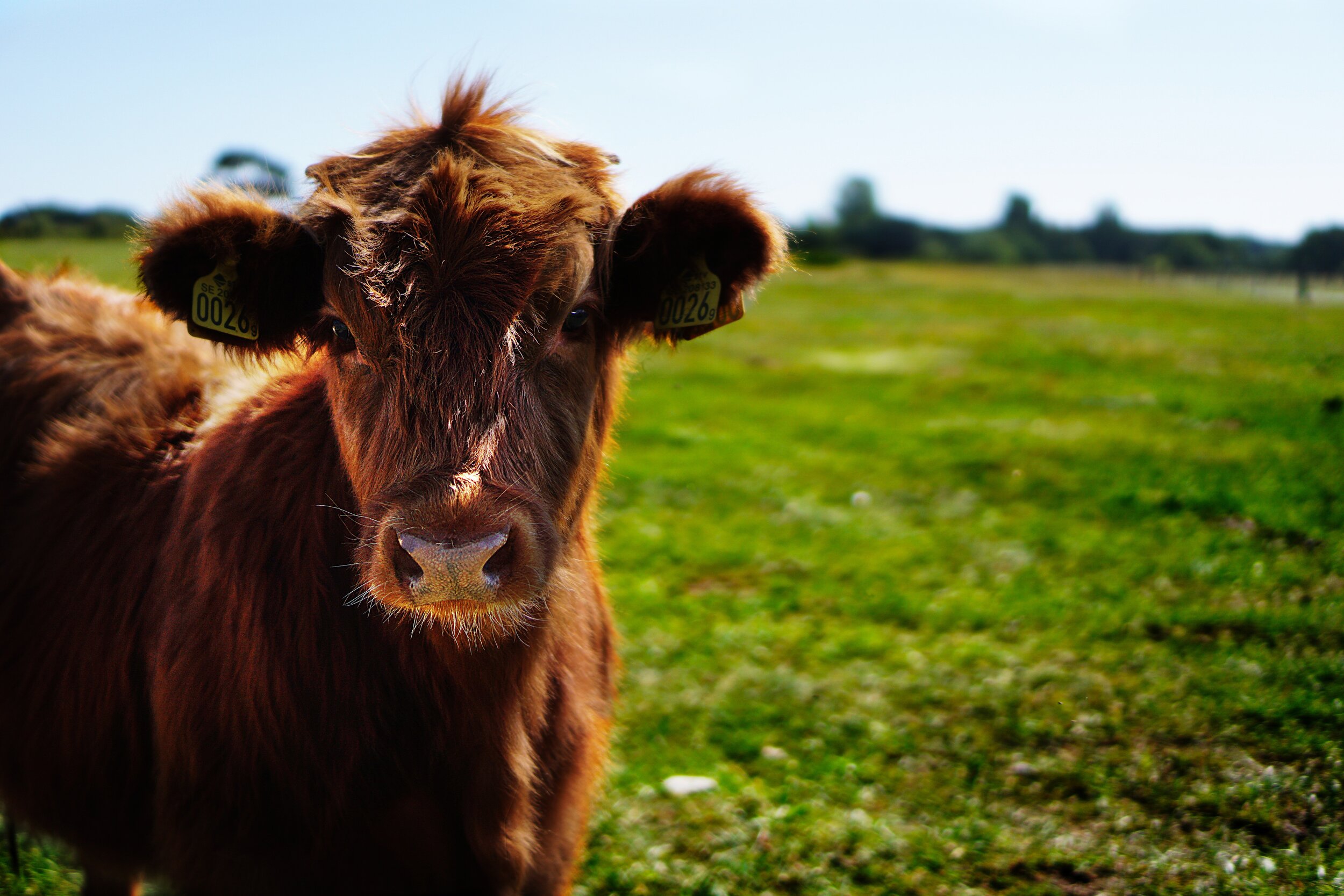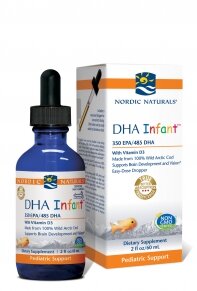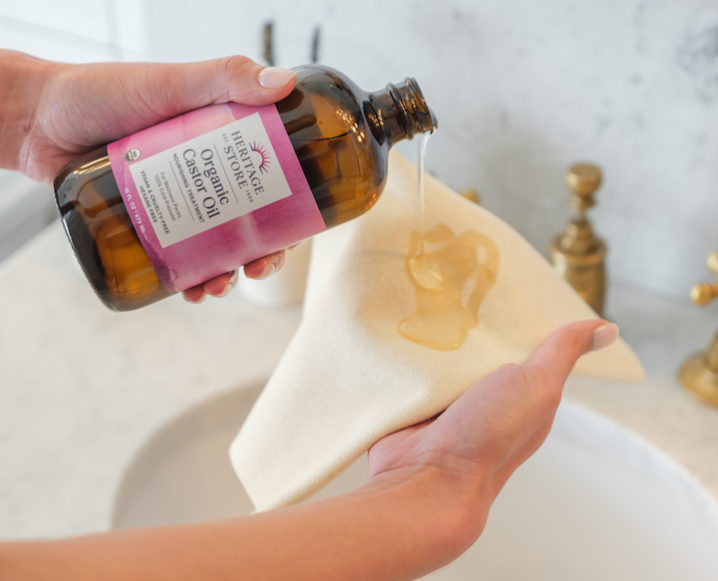As a parent, one of the most frustrating experiences is the guessing game we have to play when our babies don’t feel well. It’s hard to decipher whether they’re fussy because their tired, or their tummy hurts, or they just want to be held. This often causes us to second guess ourselves, and wonder what we’re doing wrong.
Often times, babies are fussy because they’re experiencing digestive discomfort. Gas is often where we point the finger. But then we must ask the question, “Why does my baby have gas to begin with?”
Digestive issues in babies can be very difficult to pinpoint. Is it the formula? The bottle? The person who’s feeding them? In this article, we focus on the most common culprit… the formula.

Is my baby sensitive to formula?
Store-bought baby formula can cause digestive issues in babies for a variety of reasons. It could be due to the additives, preservatives, emulsifiers, or the source of protein.
Formula is mostly made of cow’s milk or soy protein. Soy protein is not recommended for infants under 4 months. It contains manganese, which can impede on brain development.
Many of these formulas contain added ingredients for taste and shelf stabilization, even in the organic varieties:
Beware of ingredients such as:
- Processed refined sugars (corn syrup, maltodextrin, brown rice syrup with detectable levels of arsenic)
- Palm oil
- DHA and ARA (these are extracted with hexane)
- Carrageenan
- Synthetic Preservatives (ascorbyl palmitate, beta-carotene)
- Synthetic Nutrients (Lutein, Lycopene, Nucleotides, Taurine, L-Carnitine, L-Methionine)
Signs your baby is sensitive to cow’s milk
The most common signs of lactose intolerance in children and infants are:
- Rhinitis
- Diarrhea
- Vomiting
- Asthma
- Anaphylaxis
- Urticaria
- Eczema
- Chronic catarrh (mucus buildup in nasal passages)
- Migraine
- Colitis
- Epigastric distress
The confusion about lactose intolerance

Lactose intolerance is commonly confused with a milk allergy, but the two are very different issues. An allergy occurs when the body’s immune system reacts to a protein within the milk. Lactose intolerance has an entirely different mechanism. Lactose is a carbohydrate, a disaccharide, meaning “two-sugars”. In order to properly digest, these two sugar chains must be broken down into single chains, and that is the job of the lactase enzyme.
A digestive tract that lacks sufficient lactase to to the job will allow these lactose disaccharides to sit in the small intestine, where they ferment and lead to gas and bloating.
Goat milk vs Cow’s milk
While goat milk is not a replacement for breast milk, it has been used successfully as an alternative to cow’s milk in babies who have lactose intolerance. As we come to better understand the human microbiome, researchers have considered whether the bacterial species within the milk are the reason for increased tolerance of goat (caprine) milk. An Australian study in 2013 analyzed the microbiota in infant stool, and found that goat milk formula produced a more similar bacterial sequence to that of breast milk
Perhaps the reason for improved digestibility of goat milk is associated with the makeup. The fat globules in goat milk are smaller, with a higher percent of short and medium chain fatty acids. The softer curd formation of its proteins lend to a healthier lipid metabolism relative to cow’s milk.
There is also evidence that goat milk also has a greater iron bioavailability, meaning it is more readily absorbed and utilized by the body, than cow milk.
Most importantly, studies show that the nutritional outcomes of goat milk vs. cow’s milk are equivalent. In other words, babies grow at the same rate regardless of whether they are fed goat or cow milk.
How do I make my own baby formula?
If you’re concerned that your baby is reacting adversely to formula, it may be worth a try to make your own. This way you can manipulate the ingredients and more easily pinpoint the cause for irritation.
I inherited this recipe from one of my most incredible instructors, Dr. Janis Gruska. She is a naturopathic doctor and midwife with over 25 years of experience, and trusted this recipe with her patients. The original recipe comes from a wonderful resource, where you can also see a how-to video and FAQ’s:
The recipe does use cow’s milk, however, it specifies whole raw cow’s milk because of the health benefits associated. Processed milk contains fewer benefits, and may actually cause more harm than good. You may modify the recipe to contain goats milk as an alternative. Please avoid using nut milks as a substitute.
Recipe for homemade infant formula
Ingredients
- 2 cups whole raw cow’s milk, preferably from pasture-fed cows OR goat milk**
- 1/4 cup homemade liquid whey (See recipe for whey, below) Note: Do NOT use powdered whey or whey from making cheese (which will cause the formula to curdle). Use only homemade whey made from yoghurt, kefir or separated raw milk.
- 4 tablespoons lactose
- 1/4 teaspoon bifidobacterium infantis
- 2 or more tablespoons good quality cream (preferably not ultrapasteurized),
- 1/2 teaspoon unflavored high-vitamin or high-vitamin fermented cod liver oil or 1 teaspoon regular cod liver oil
- 1/4 teaspoon high-vitamin butter oil (optional) 1 teaspoon expeller-expressed sunflower oil
- 1 teaspoon extra virgin olive oil
- 2 teaspoons coconut oil
- 2 teaspoons Frontier brand nutritional yeast flakes 2 teaspoons gelatin
- 1-7/8 cups filtered water
- 1/4 teaspoon acerola powder
Instructions
- Put 2 cups filtered water into a pyrex measuring pitcher and remove 2 tablespoons (that will give you 1-7/8 cups water).
- Pour about half of the water into a pan and place on a medium flame.
- Add the gelatin and lactose to the pan and let dissolve, stirring occasionally.
- When the gelatin and lactose are dissolved, remove from heat and add the remaining water to cool the mixture.
- Stir in the coconut oil and optional high-vitamin butter oil and stir until melted.
- Meanwhile, place remaining ingredients into a blender.
- Add the water mixture and blend about three seconds.
- Place in glass bottles or a glass jar and refrigerate.
- Before giving to baby, warm bottles by placing in hot water or a bottle warmer. NEVER warm bottles in a microwave oven.
**Important note: Although goat milk is rich in fat, it must be used with caution in infant feeding as it lacks folate and is low in vitamin B12, both of which are essential to the growth and development of the infant. Inclusion of nutritional yeast to provide folate is essential. To compensate for low levels of vitamin B12, if preparing the Milk-Based Formula (above) with goat’s milk, add 2 teaspoons organic raw chicken liver, frozen for 14 days, finely grated to the batch of formula. Be sure to begin egg-yolk feeding at four months.
Homemade Whey
Makes about 5 cups.
Homemade whey is easy to make from good quality plain yoghurt, or from raw or cultured milk. You will need a large strainer that rests over a bowl.
If you are using yoghurt, place 2 quarts in a strainer lined with a tea towel set over a bowl. Cover with a plate and leave at room temperature overnight. The whey will drip out into the bowl. Place whey in clean glass jars and store in the refrigerator.
If you are using raw or cultured milk, place 2 quarts of the milk in a glass container and leave at room temperature for 2-4 days until the milk separates into curds and whey. Pour into the strainer lined with a tea towel set over a bowl and cover with a plate. Leave at room temperature overnight. The whey will drip out into the bowl. Store in clean glass jars in the refrigerator.
Fortifying your homemade formula
Store-bought formulas often contain added DHA to aid brain development, and there is a wealth of evidence pointing to the importance of this essential fatty acid for infants and children. Babies age 6 months to 2 yrs need a combined EPA/DHA of 500 mg daily, with the majority of the ratio in DHA (the ratio reverses as we age).
Dr. Gruska once told me: “If a child is formula fed I recommend supplementing the formula with 1 tsp. of Cod Liver Oil a day and 1/8 tsp. of a good quality probiotic powder daily.”
Cod liver oil contains large amounts of EPA and DHA, and is a great option to fortify your home formula if you are getting it from a trusted source. It does have a strong taste, so it may cause your baby to be averse to the formula, depending on how picky they are.
Adding EPA & DHA to your formula
EPA is important for cell function, while DHA is crucial for maintaining cell structure. Essential fatty acids live in the phosphollipid bilayer, or outer membrane of our cells. This barrier is where waste goes out and nutrients come in, so you can understand why it is crucial to maintain the integrity of this barrier. A diet rich in Omega-3 fatty acids promotes fluidity, flexibility and speed of communication between cells.
Currently, the most trusted source for omega-3 essential fatty acids is Nordic Naturals. Why do I trust them?
- They own the entire process of boat to bottle
- Fish come from Norway (arctic cod) or South America (sardines and anchovies)
- Processed in either Norway or San DIego where they use every part of the fish, remnants are used as biofuel
- They process using molecular distillation for cleaning and refining
- Bottling is done in oxygen-free environment to minimize rancidity of the oils
- “No fish burp” guarantee. If the oil causes foul taste, send it back for a free replacement.
- All products are third party tested and have a public certificate of analysis for each lot number
Nordic Naturals Infant DHA is my go-to for infants. It has weight based tick marks on the bottle so you can easily determine how much your baby needs. You can find this product in my online dispensary.
Where to go for help
For ongoing concerns, it’s best to consult a physician. As a naturopathic doctor, digestive health is a basic tenet of my practice. We can understand a lot about the inner workings of the human body just by looking at bowel patterns. When that doesn’t tell us what we need to know, we can send in a specimen (stool, urine, saliva, blood) for analysis and work through the specific imbalances.
Schedule a free consultation to learn more.







